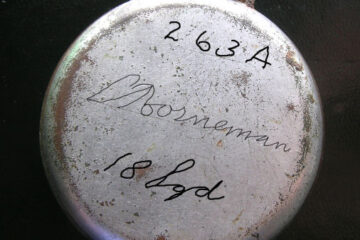The book The Devil’s Grin by Toni Harting provides an in-depth exploration of the Japanese military’s imprisonment of Dutch civilians in the Dutch East Indies during the Pacific War (1941-1945). Harting offers a detailed account of the Japanese occupation, focusing on the brutality endured by prisoners in the concentration camps, while also delving into the broader geopolitical context of the war. The Pacific War, which began on 7 December 1941 (American date; 8 December in Asia) with Japan’s attack on Pearl Harbor, brought Japan into conflict with a coalition of nations, including the USA, Great Britain, the Netherlands, Australia, New Zealand, and more. The Japanese military’s aggressive expansion, driven by their adherence to the bushido (Way of the Warrior) code, aimed to seize British India and Australia as part of their grand plan to dominate the region.
The book weaves together personal memoir and historical analysis, providing insight into the internment of not only Dutch civilians but also English, American, and Australian nationals. In Java, the registration and subsequent internment of Caucasians, including Australians, began in mid-April 1942, marking the Japanese effort to remove perceived enemies from the new Japanese-Indonesian society. Harting’s narrative recounts how brutality was commonplace, with torture and beheadings used as punishment for minor infractions. He mentions the horrific beheading competitions among Japanese soldiers, citing instances such as the decapitation of 200 wounded Australians and Indians during the retreat from Muar in Malaya.
Australia’s involvement in the Pacific War is underscored by the suffering of Australian prisoners of war in Japanese camps and forced labor projects. Harting describes the Pakan Baroe death railway, where approximately 700 of the 5,000 Allied prisoners, including Australians, died while building the 220-km railroad through Sumatra’s jungles. Even more devastating was the Sandakan Death Marches, where about 2,400 Australian and British prisoners were held in Borneo before being forced to march through 260 km of impenetrable jungle. The marches, conducted between January and June 1945, led to the deaths of almost all the prisoners due to starvation, sickness, and exhaustion.
By highlighting the suffering of civilians and POWs from various Allied nations, including Australia, Harting not only personalises his own experience but also sheds light on the larger atrocities committed during the Japanese occupation of Southeast Asia. His goal is to bring awareness to these often-overlooked stories, offering readers a broader understanding of the war’s impact on the Dutch East Indies and its people, while also acknowledging the immense suffering endured by Australians and other Allied forces.


